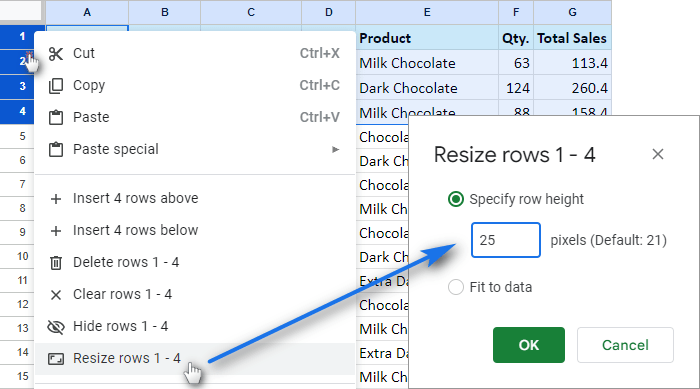
Select the column that you want to autofit.Suppose you have the dataset as shown below and you want to autofit column A (which has the company names). The easiest way to autofit the width of the columns in Google Sheets is to select all the columns for which you want to adjust the width and use a simple double click. So let’s get started! Autofit Column Width with Double Click Autofit Column Width with ‘Fit to Data’ Option.Formatting will be automatically applied to a cell if it's directly above, below, or between two cells that contain the same formatting and are on the same indent level.Column headers are always formatted in white, bold text with a grey background.For more information, see the Change the Language and Date Notation article. The symbols used for decimal and thousands separators for currency and number format are controlled by the Regional Preferences specified for your account.You can’t use the numbers tools with text values. Smartsheet treats numbers combined with other characters (letters, punctuation) as text.Things to know about when you format data: Selec Increase Decimal or Decrease Decimal to move the decimal point. You can enable Thousands Format to include the thousands separator and decimal. The value 95 will be displayed as 9,500%. If you format a cell this way, the value 0.95, for example, will be is displayed as 95%. Use Percentage Format to treat numbers as a percentage. Select Currency Format to automatically format numeric values with the appropriate currency symbol and decimal position. If you don't see these buttons on the toolbar, you may need to click More.

Numeric formattingīuttons for formatting numbers are grouped together in the top navigation bar under your sheet's name. Details on this are available in the Highlight Changes article. Click the Format Painter button again, or press Esc to release the locked format.Įnable Highlight Changes to gain visibility on recent edits made to your sheet. You can then continuously apply the locked format to cells.
#Google sheets expand cell to fit text how to#
Details about how to do this on this are included in the Parent Rollup article.įor more information on creating hierarchical relationships, check out the article on using hierarchy. You can use these hierarchical relationships along with formulas, for example, to automatically calculate a weighted percent complete on a parent task based on data in the child tasks. Indent rows to create an organized structure to your sheet, with child rows that fall under a parent row. You can apply different date formats (for example, long form dates) with the steps in Apply a Standardized Date Format in Your Sheet. When you release your click, all columns and rows in the sheet should be highlighted and you can then set formatting for the entire sheet.


Highlight all columns in the sheet by clicking the left-most column's header, scrolling to the right, then Shift+click the right-most column's header. Select the column header to apply column formatting to existing and newly added cells in the column. Select the row number to apply row formatting to existing and newly added cells in the row. Take this action before you click a formatting icon Follow the guidance below to help with this. You can format groups of data all at once. Select Conditional Formatting and follow the instructions on your screen. You can set rules to change the format of a cell when the conditions you define are met, for example, highlight a row in red when a deadline is past due and a task is not marked as complete. For a list of keyboard shortcuts, see the Keyboard Shortcuts article. You can complete formatting tasks with keyboard shortcuts. If you don't see a button that you need, click More.

To apply formatting to numbers and text in your sheet, use the buttons on the toolbar at the top of the Smartsheet window.įor certain views or screen sizes, not all buttons will be visible on the toolbar.


 0 kommentar(er)
0 kommentar(er)
